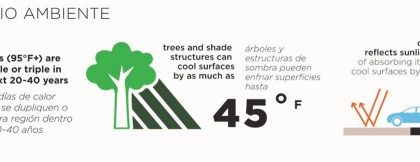#WalkBikeForward: Join us on our journey honoring key moments and people that have shaped our field as we celebrate 20 years of creating active, healthy communities.

Christopher B. Douwes is a Community Planner for the Federal Highway Administration, focusing on the Recreational Trails Program and Transportation Alternatives.
Safe, Comfortable, Accessible and Connected for Everyone
The biggest breakthrough is a more common understanding that our transportation system needs to accommodate all users with safe, accessible, comfortable, and connected multimodal networks. There is increased public demand for walking and biking as urban populations increase and congestion builds; as people understand the lifecycle costs of car ownership and may choose to not own a private vehicle; as more studies link better health to exercise.
There are many factors involved in making this possible:
- Federal surface transportation legislation (ISTEA) in 1991 authorized the use of Federal funds for pedestrian and bicycle transportation and for shared use paths and recreational trails.
- When the Transportation Enhancement and Recreational Trails Program projects were new in the 1990s, many people questioned how small, independent projects could benefit the transportation system. After 25 years, these projects are linking together to form interconnected networks that can take people safely and conveniently to multiple destinations.
- Rail-to-trail and rail-with-trail facilities are nonmotorized transportation expressways linking communities together.
- Complete Streets policies encourage communities to consider all users. For example, it is becoming routine for new or rehabilitated highway bridges to include sidewalks, establishing key links that can make or break an interconnected network.
- Bike share technology is transforming communities. In only a few years, bikeshare systems have evolved rapidly and spread in response to the demand in a variety of contexts — urban areas, medium sized cities, and campus settings. Combined with new bike lanes and other bicycle-friendly facilities, it is becoming more common to see people bicycling for transportation, both on bikeshare and personal bikes. We are getting to the point where we are seeing measureable changes in percentages of trips by bicycling, and more systems are realizing that bikeshare can supplement and assist transit systems.
We are reaching the point where we understand the value of integrating bicycling and walking into a multimodal transportation system. We are becoming more flexible in our facility designs to accommodate all users. FHWA is developing guides to enhance multimodal flexibility, including a Small Town and Rural Street Design Guide under a contract with Alta. We are finding methods to enhance walking and bicycling as we rehabilitate our existing infrastructure. The breakthrough that we need is for the public to support accommodation of pedestrians and bicyclists in all transportation projects where pedestrians and bicyclists reasonably may be expected, and not see these facilities as extras or add-ons.
What We Still Need to Do
We still need to educate ourselves and the public about how we can integrate transportation and recreation facilities, including sidewalks, bike lanes, and shared use paths and other trails, where appropriate, to benefit both user groups. Many people start walking or bicycling for recreation. When we have interconnected networks, recreational users realize that they can use these facilities for transportation, and that can support a healthy, active lifestyle.
We still have work to do to educate the public into a safety culture. A safety culture means we must stop being distracted when we are traveling: put away those electronic devices. It means that we need to consider how our travel affects the communities that we pass through.
Equity in transportation seeks fairness in mobility and accessibility to meet the needs of all community members. FHWA published Pursuing Equity in Pedestrian and Bicycle Planning to share strategies, practices, and resources to address bicycle and pedestrian planning inequities. FHWA also supports Environmental Justice to ensure full and fair participation by potentially affected communities in every phase of the transportation decision-making process.
FHWA’s new Environmental Justice Reference Guide helps planners and decision-makers appropriately address the transportation needs and impacts for all community members. FHWA also is working to restore community connections, develop workforce capacity, and catalyze neighborhood revitalization. This means reconnecting communities that may have been divided by transportation infrastructure in the past, such as railroads and highways that split communities. That can include safety improvements and eliminating gaps in the network, along with inclusion of paths on highway caps, tunnels, and bridges.
The concepts of Active Communities, Complete Streets, and Context-Sensitive Solutions have helped to legitimize walking and bicycling as valid modes of transportation. We see evidence from across that country that communities that want to thrive realize they need to integrate land use, housing, and access to essential services. A transportation system that benefits all users makes these communities places where people want to live, work, and enjoy life.


